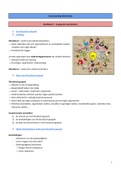Samenvatting
SCO samenvatting, H1-2, 4, 7 en reader
- Instelling
- Rijksuniversiteit Groningen (RuG)
Samenvatting van het boek Operations and Supply Chain Management (Jacobs en Chase, vierde editie). De samenvatting is in het Engels geschreven.
[Meer zien]














